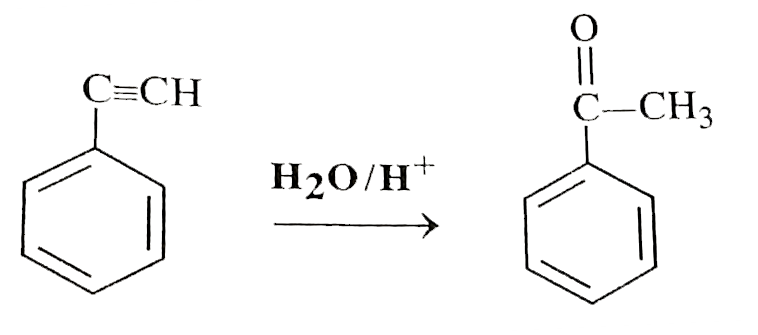Do the following conversions: Nitrobenzene to m-bromochlorobenzene
To convert Nitrobenzene to m-Bromochlorobenzene, we can follow these steps:
Step 1: Nitration of Benzene
Start with Nitrobenzene (C6H5NO2). The first step is to perform a bromination reaction on Nitrobenzene. Since the nitro group (NO2) is a meta-directing group, bromination will occur at the meta position relative to the nitro group.
Reaction:
Nitrobenzene+Br2FeBr3−−−→m-Bromonitrobenzene
Step 2: Reduction of Nitro Group
Next, we need to convert the nitro group (NO2) into an amine group (NH2). This can be achieved through reduction using a suitable reducing agent like tin (Sn) and hydrochloric acid (HCl).
Reaction:
m-Bromonitrobenzene+Sn/HCl→m-Bromoaniline
Step 3: Diazotization
The amine group (NH2) in m-Bromoaniline can be converted into a diazonium salt by treating it with nitrous acid (generated in situ from sodium nitrite and hydrochloric acid).
Reaction:
m-Bromoaniline+NaNO2+HCl→m-Bromobenzenediazonium chloride
Step 4: Chlorination
Finally, we can perform chlorination on the m-Bromobenzenediazonium chloride using copper(I) chloride (CuCl) in the presence of hydrochloric acid (HCl). The diazonium group (N2) acts as a good leaving group, allowing the chlorine to substitute at the position where the diazonium group was attached.
Reaction:
m-Bromobenzenediazonium chloride+CuCl→m-Bromochlorobenzene+N2
Final Product
The final product of this series of reactions is m-Bromochlorobenzene.
---
Start with Nitrobenzene (C6H5NO2). The first step is to perform a bromination reaction on Nitrobenzene. Since the nitro group (NO2) is a meta-directing group, bromination will occur at the meta position relative to the nitro group.
Nitrobenzene+Br2FeBr3−−−→m-Bromonitrobenzene
Next, we need to convert the nitro group (NO2) into an amine group (NH2). This can be achieved through reduction using a suitable reducing agent like tin (Sn) and hydrochloric acid (HCl).
m-Bromonitrobenzene+Sn/HCl→m-Bromoaniline
The amine group (NH2) in m-Bromoaniline can be converted into a diazonium salt by treating it with nitrous acid (generated in situ from sodium nitrite and hydrochloric acid).
m-Bromoaniline+NaNO2+HCl→m-Bromobenzenediazonium chloride
Finally, we can perform chlorination on the m-Bromobenzenediazonium chloride using copper(I) chloride (CuCl) in the presence of hydrochloric acid (HCl). The diazonium group (N2) acts as a good leaving group, allowing the chlorine to substitute at the position where the diazonium group was attached.
m-Bromobenzenediazonium chloride+CuCl→m-Bromochlorobenzene+N2
The final product of this series of reactions is m-Bromochlorobenzene.
Similar Questions
Do the following conversions: Nitrobenzene to 1,3,5-tribromobenzene
View SolutionHow will you bring about the following conversion :
Nitrobenzene to phenol
View SolutionAccomplish the following conversions :
Benzene to m-bromophenol
View SolutionAccomplish the following conversions :
Nitrobenzene to benzoic acid
View SolutionComplete the following conversions?
View SolutionWrite reactions for the following conversions.
4-Nitrobenzoic acid to Nitrobenzene
View SolutionHow will you bring about the following conversion :
Nitrobenzene to benzoic acid.
View SolutionDo the following conversions.
Benzene to 1,3-dibromobenzene
View SolutionComplete the following conversion.

View SolutionHow are following conversions done ?
View Solution
